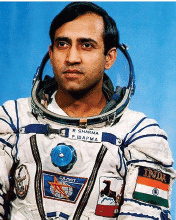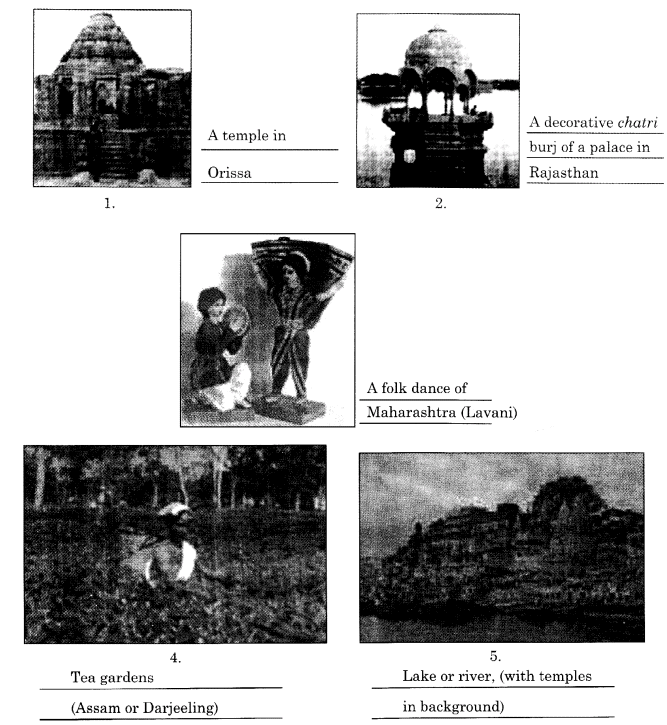Unity in Diversity NCERT Solutions | Communicative English for Class 10 PDF Download
Introduction
The Indian National Flag flew, for the first time, to space in 1984 when Wing Commander Rakesh Sharma went to space. The flag was attached as a medallion on the space suit of Rakesh Sharma. On being asked by Mrs Indira Gandhi how India looked from up there, he said 'saare jahan se achcha'. Rakesh Sharma has one underlying concern. "I hope we don't export conflict from this planet into the others. None of the paradigms that define us here on earth- the borders, the parochialism, the divide, should mar our presence in space".
Rakesh Sharma has one underlying concern. "I hope we don't export conflict from this planet into the others. None of the paradigms that define us here on earth- the borders, the parochialism, the divide, should mar our presence in space".Do you think moments of glory make people more patriotic?
Recall more such moments.
- The Indian flag was hoisted on the highest mountain peak of the world, Mount Everest on 29th May 1953.
- When the National Anthem plays during Olympics.
- _________
- _________
- _________
- _________
Now read the passage given below.
A1. Read about Rohan and Rajni's observation that the Indian identity is forged in diversity
Rohan and Rajini are travelling in India, one from Gujarat to Mizoram, and the other from Kashmir to Tamil Nadu. As they travel they notice the beauty and diversity of each region, and yet feel a strong palpable emotional connect. They appreciate the idea that India is one land embracing many and that the Indian nation has a multitude of castes, creed, colour, conviction, culture, cuisine, costume and custom; and yet we are one. Everywhere they observe festivals dedicated to seasons and harvests. They feel heartened by the pride displayed during national festivals. They both return home with a feeling of being complete Indians having embraced every region that they travelled through.
A2. During the journey, Rohan and Rajini both note down the information they gather about the states they travel through. When they return they jot down this information.
Working with your partner, choose any one journey and complete the grid for them. You may access the internet or refer to hooks in the library to complete your grid.
- The states that they pass through.
- The variety of languages they hear.
- The local cuisines they enjoy.
- The local handicrafts they buy for their family from each of the states they pass through.
- The weather they experience.

Ans:
A3. What conclusions do you draw from Rohan and Rajini's experience?
Ans: India is a big country. There is a great deal of variety in the clothes they wear and the food they eat. There are different creeds. Festivals are dedicated to seasons and harvests. There is a heartening feeling of pride in these festivals. In spite of the great variety, there is great unity among its people. They live in perfect communal harmony.
A4. Present your conclusions to the class.
Ans: Please do it on your own.
A5. Where are they from?
Divide the class into six groups. Your teacher will read out from page 249 the conversation between four people talking about the Indian states they live in. As soon you think you know which region the first person is speaking about, ask your teacher to stop. If you are right your group gets a point. If you are wrong, all the other groups get a point and the teacher starts again. But your group isn't allowed to guess again for this region. Then listen to the other three speakers in the same way. Which group has got the most points at the end?
Ans: Mainly meant for class.
Class-room activity
- Speaker A : Gujarat
- Speaker B : Karnataka
- Speaker C : West Bengal
- Speaker D : Uttrakhand
A6. Look at the pictures given below. Decide in your group which regions the six photos probably come from. Explain why you think so and find out from your teacher if you were correct. Then write a short caption for each photograph. It can be serious or funny.

Ans:
- The architecture of the building in picture no. 1 gives the idea that it may be a Hindu temple. The tall but not round structure at the top is much like what we find in Hindu temples. It has a sanctum sanatorium in which the idol of the chief deity is installed.
- The picture no. 2 seems to be a mausoleum. It is so because there is no place for prayer etc, which is the hallmark of a religious place. Or it may be burj of a palace in Rajasthan.
- Picture no. 3 is clearly a folk dance. The dresses of the girl and the boy brings to mind Maharashtra. Hence it is very likely to be a folk dance of Maharashtra.
- Picture no. 4 is a tea garden. Such tea gardens are found in Assam or Darjeeling or Ootacumand in Tamil Nadu.
- Picture no. 5 gives the picture of a river and a series of temples by its side. It is a religious place, Varanasi in Uttar Pradesh.
|
8 videos|250 docs|8 tests
|
FAQs on Unity in Diversity NCERT Solutions - Communicative English for Class 10
| 1. What is the significance of unity in diversity in India? |  |
| 2. How does diversity contribute to the cultural richness of India? |  |
| 3. What are some examples of unity in diversity in Indian festivals? |  |
| 4. How does the government promote unity in diversity in India? |  |
| 5. What role does education play in fostering unity in diversity among Indian youth? |  |




















